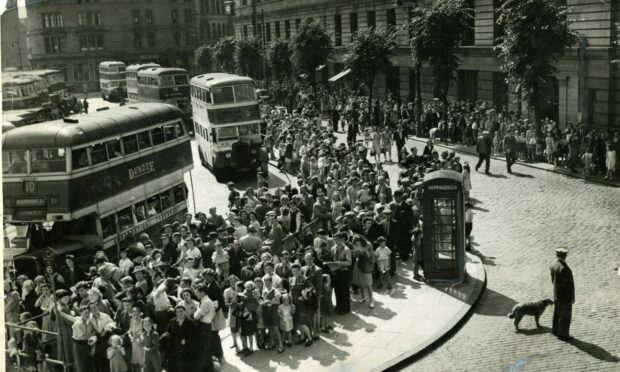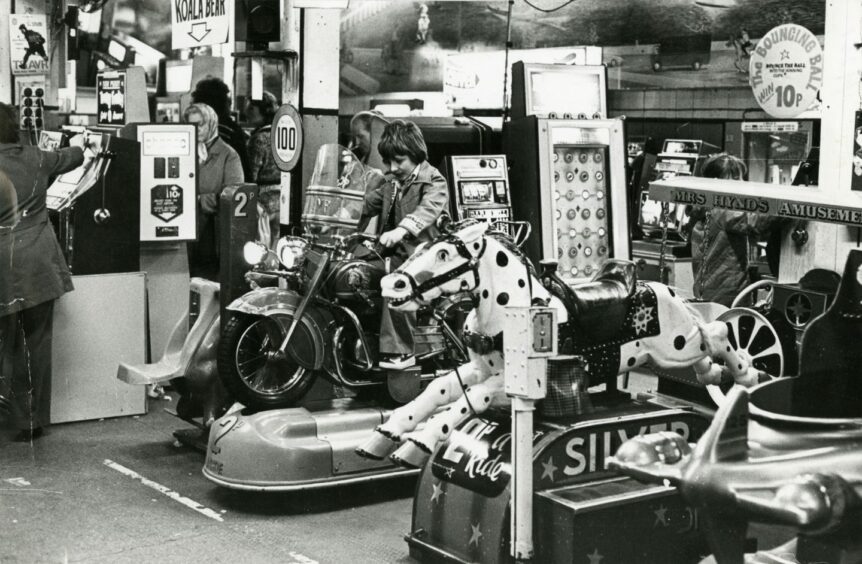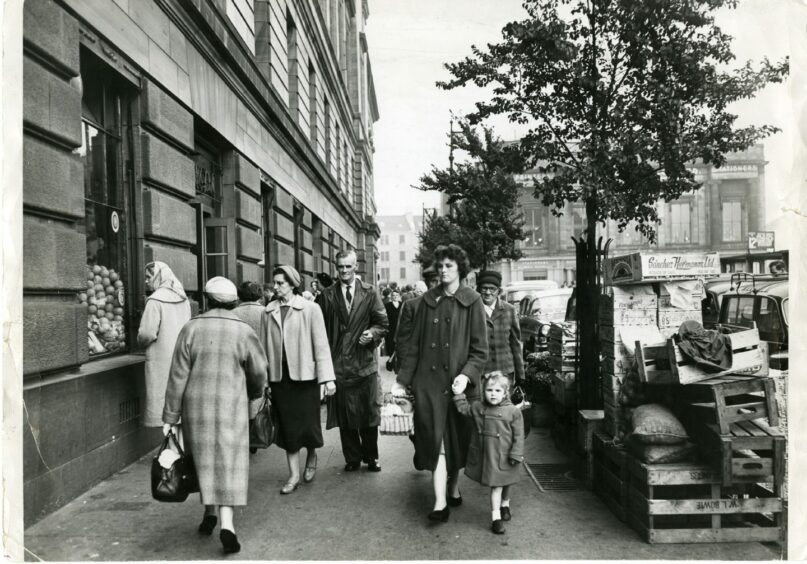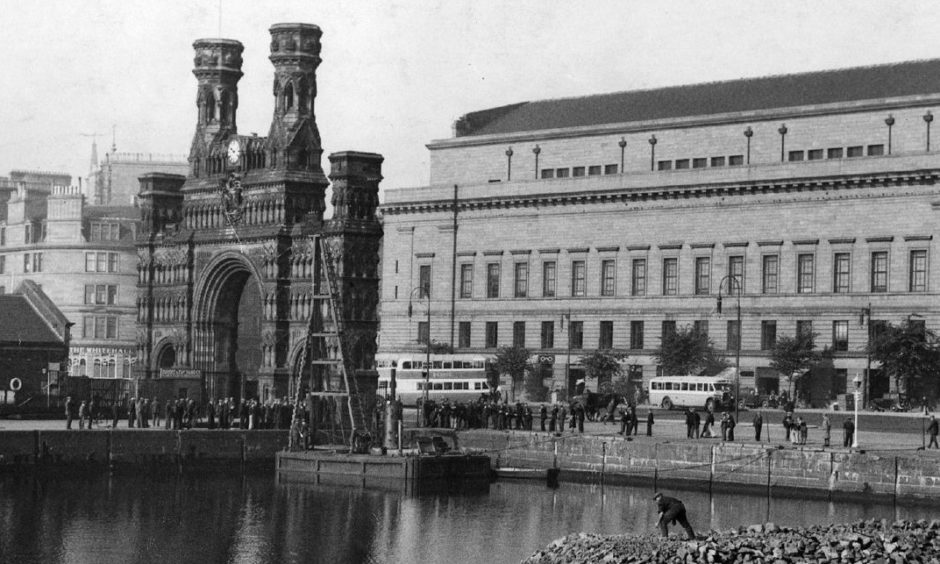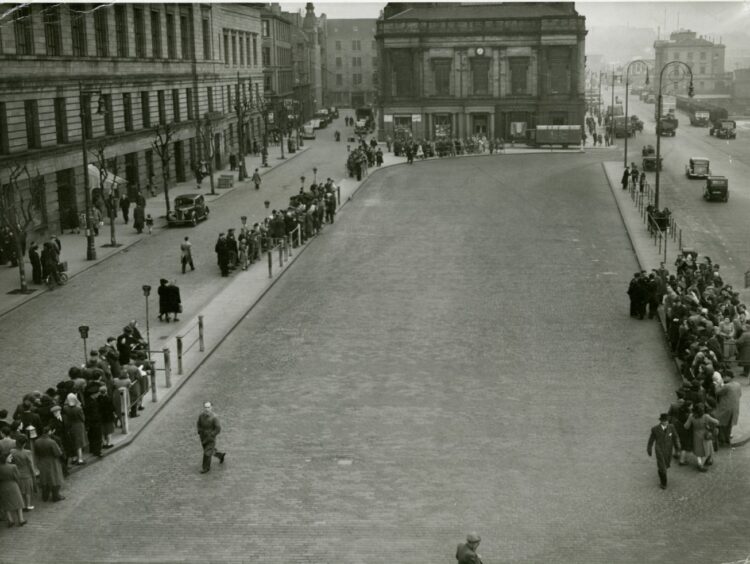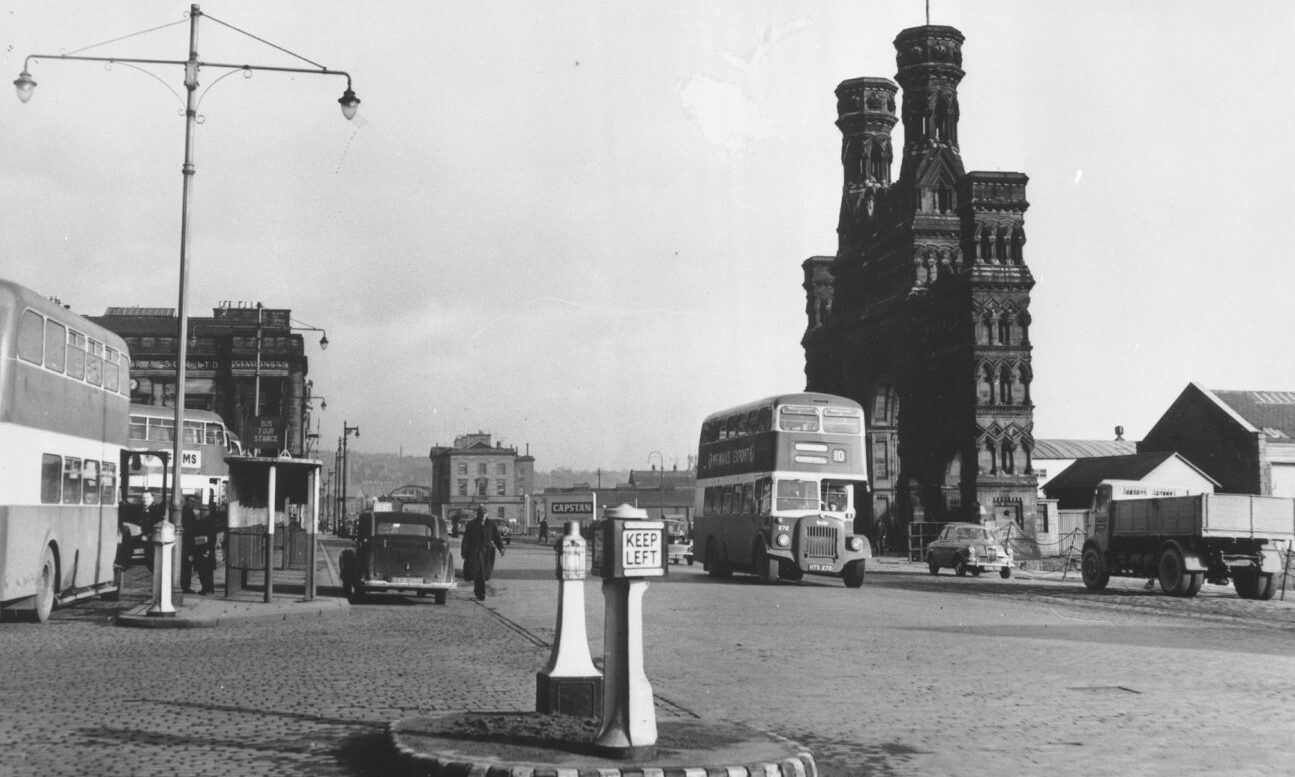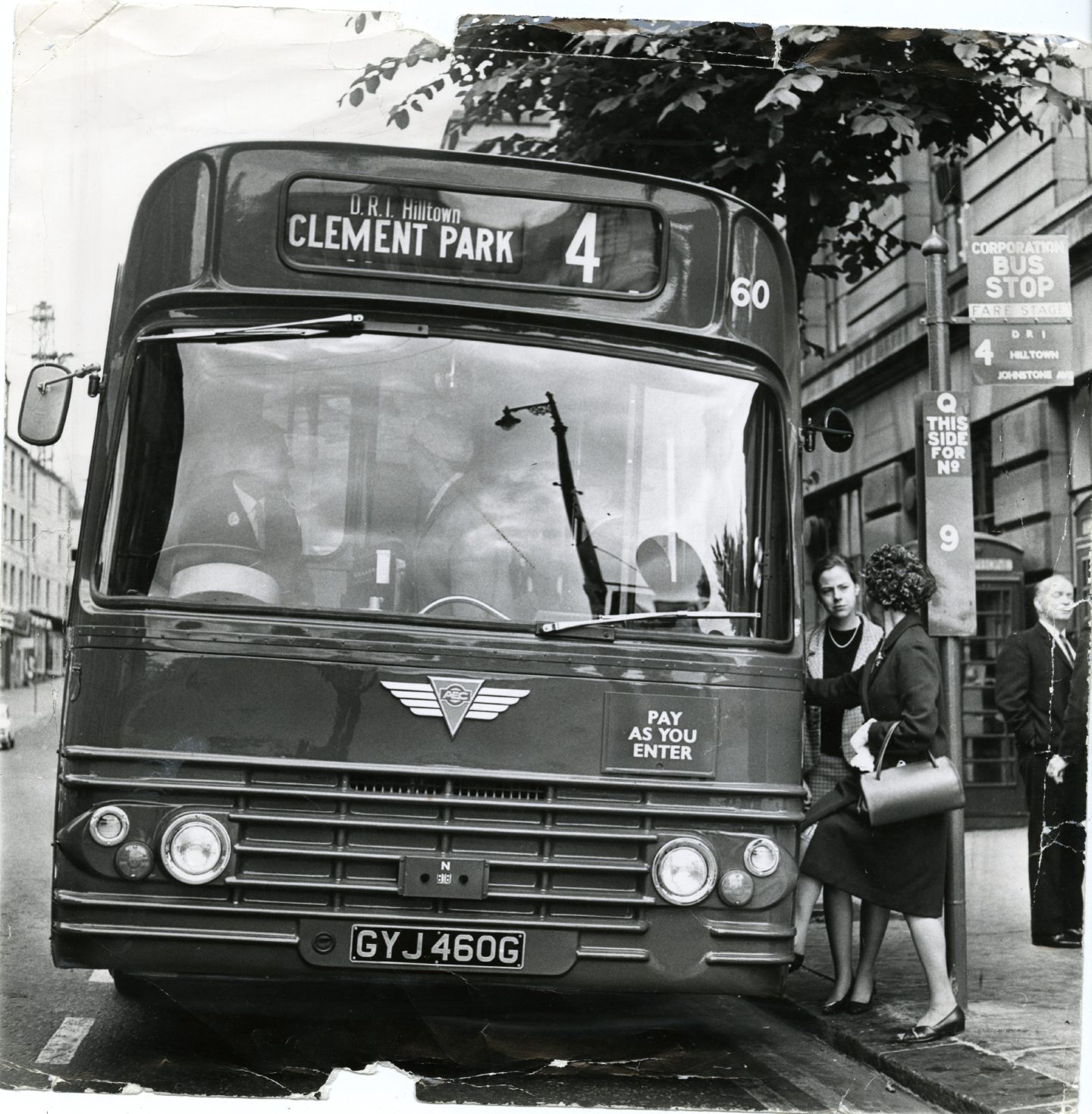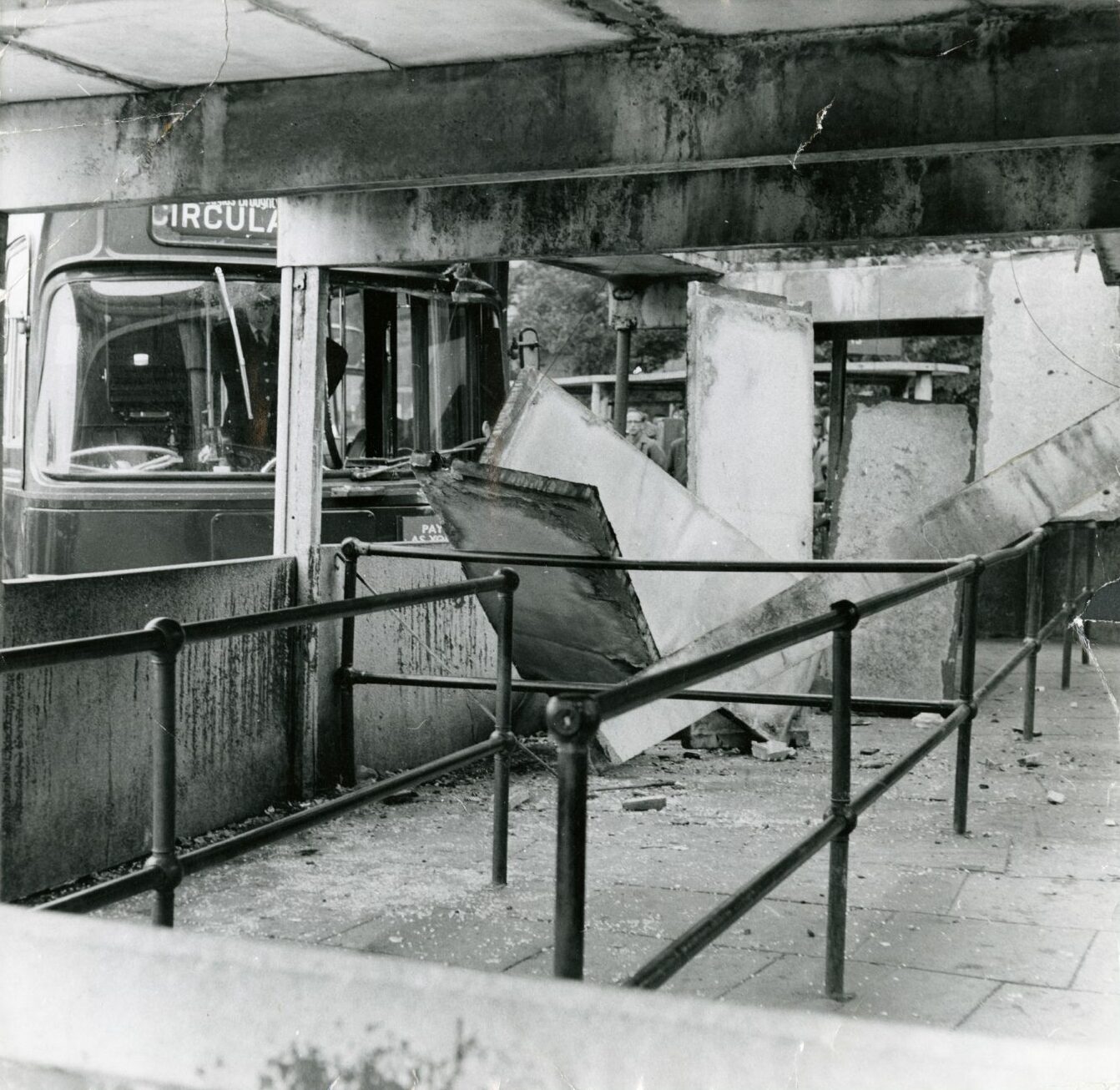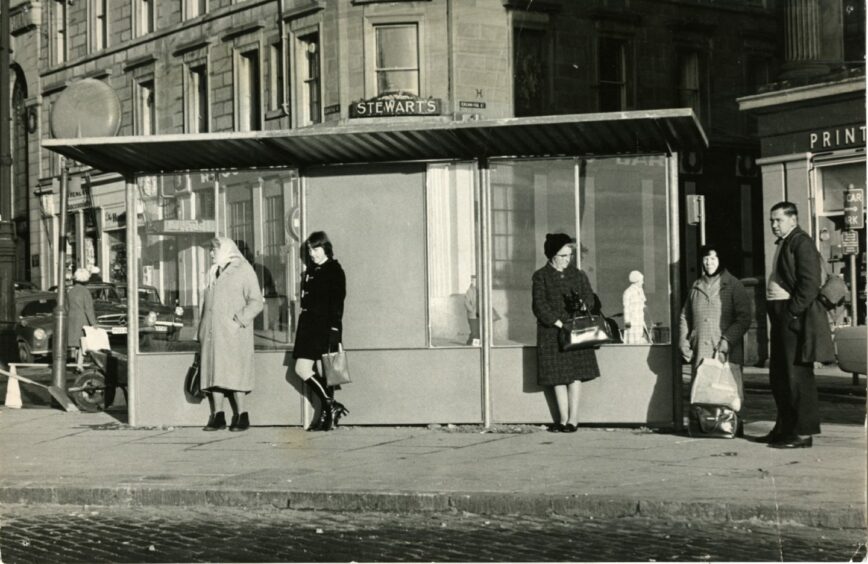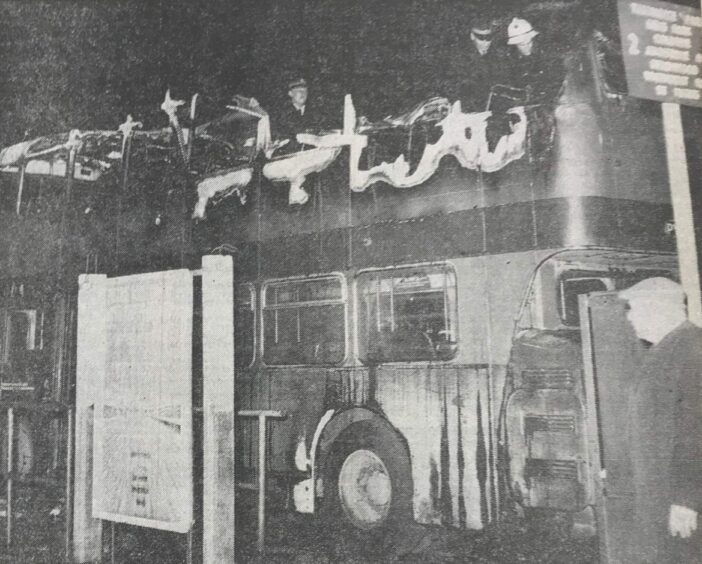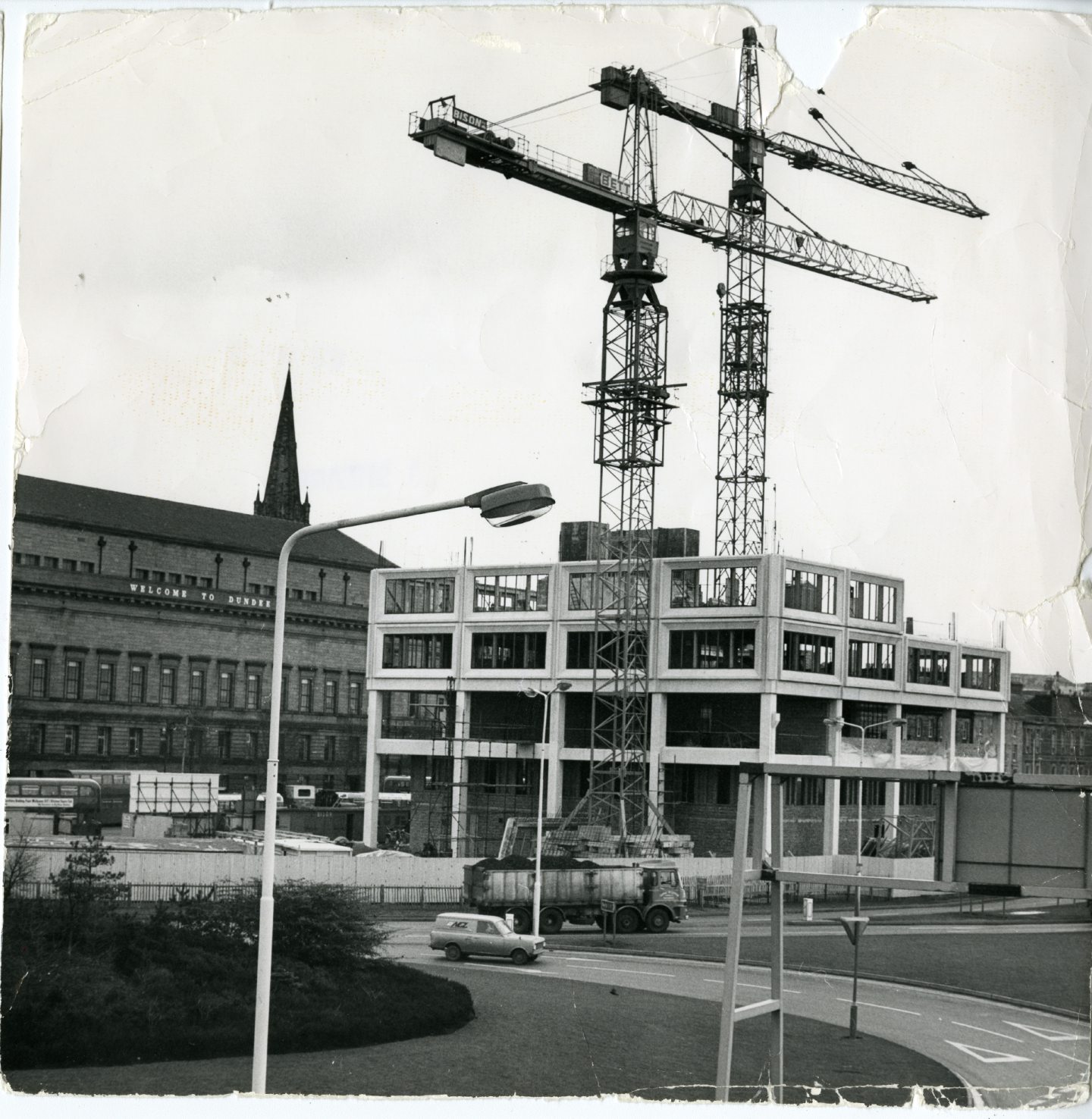All aboard for a trip back to the Shore Terrace bus stance which opened in January 1933 and is part of Dundee folklore.
The cobbled piece of ground on Dock Street was originally sandwiched between the Royal Arch and the rear of the Caird Hall which was completed in 1923.
Shore Terrace is fondly remembered not just for the buses but also for the City Arcade which was directly underneath the Caird Hall and became an institution for shoppers.
This veritable Aladdin’s cave, complete with amusement arcade, which included Dundee’s iconic Champion the Wonder Horse, was a haven for school children heading to and from the Central Swimming Baths through the nearby Royal Arch.
Next door was Dundee Corporation Transport’s canteen and toilets, where the bus crews played dominoes, tallied up their way-bills and counted piles of loose change.
Shore Terrace bus stance was where many of the city’s bus services ran to and from for over 40 years before finally closing in March 1974 when Tayside House was built.
Derek Simpson has penned three illustrated books about the history of the city’s bus scene from the demise of the trams to the inception of Tayside Region in 1975 and up until the sell off to National Express.
Derek said: “The creation of a central bus station in Dundee was originally discussed by Dundee Corporation in 1928.
“It would take nearly five years before the idea came to fruition.
“On a site previously occupied by the Grassmarket it was sandwiched between the rear of the newly built Caird Hall and the George IV Dock.
“Looking south from Shore Terrace waiting passengers had a great view of the Royal Arch that had been erected in 1848 to commemorate the visit of Queen Victoria and Prince Albert to Dundee in 1844.
“Sadly it was demolished in 1964 to make way for the service roads for the soon to be built Tay Road bridge.
“The Shore Terrace bus stance on Dock Street opened in January 1933 and served the Dundee public for the next 40-plus years, gaining a place in the heart of many Dundonians. This cobbled piece of ground with bus stances placed around the perimeter is part of Dundee folklore.
“Ask a Dundonian of a certain age and they will always tell you that the buses should never have moved from Shore Terrace, testimony to its enduring memory.
“The main entrance to the city’s much-loved and missed arcade was also accessed from Shore Terrace with the bus crew’s rest room, canteen and offices next door.”
The stance stretched from Crichton Street in the west to Castle Street in the east but shelters were not added until 1949 to protect the passengers from the elements.
The bus shelters were made from reinforced concrete but were exposed on all sides which would make the wait in Shore Terrace a bracing experience on windy days.
Derek said: “The bus stances were the city centre termination point for all bus services with the exception of the through services like Douglas to Charleston for example.
“It was known that all the routes terminating at Shore Terrace from the mid 1950s onwards actually lost money mainly because of the dead mileage involved in getting to the Terrace.
“However, in January 1959 it was agreed to give over the south island to private operators. This had the consequence of removing services 3, 4 and 9 to the foot of Crichton Street just around the corner from Shore Terrace.
“In 1965 the stance from west to east saw the following services terminate – 1A to Blackshade, 1B to St Mary’s, 18/19 to Kirkton, 12 to Kingsway, 13 to Camperdown, 10/11 to Barnhill and the 7/8 Circular services.
“During its heyday the last buses for all the services departed simultaneously at 11.30pm, signalled by the blast of the inspector’s whistle, quite a sight for the late night revellers.”
Derek said Shore Terrace’s saddest day was on the afternoon of July 31 1972 when a single deck bus bound for Broughty Ferry skidded on the wet and greasy cobbles.
The Fleetline collided with the concrete bus stance which served the 10/11 services which resulted in the concrete roof partially collapsing which trapped many of the waiting passengers.
Scores of people waiting at other bus stops screamed as glass and lumps of concrete shot out in all directions.
Derek said: “Unfortunately one woman died with another seven requiring hospital treatment but it could have injured many more if the whole roof had collapsed.
“Following the tragedy the decision was taken to immediately remove all the concrete roofs from the shelters and in time lightweight replacements were erected to protect the passengers from the elements.”
The woman who died, Mrs Alice West, a 66-year-old widow, had been on a shopping expedition to the city centre from Broughty Ferry when the accident happened.
Derek said: “Just a month before Shore Terrace closed, a bus had arrived from St Mary’s late one evening.
“As the passengers alighted, the driver was unaware that vandals had set fire to the upper deck with the flames rapidly taking hold.
“Fortunately the bus had been constructed with a flame retardant material between the decks that saved the bus from being completely destroyed but it was certainly a moment of high drama.”
From the mid-1950s Dundee Corporation Transport Department manager William Russell was continually looking for alternative places around the city centre for the services to terminate.
Many proposals were looked at with objections from many different parties.
Derek said: “However with the site of the new Tayside House being chosen its days were numbered.
“It finally it closed on March 31 1974.
“There was no special ceremony to mark the passing of Shore Terrace after just over 40 years’ service and the next day, following its closure, service termini were scattered throughout the city centre.
“Although over the years various plans have been mooted by interested parties to have a transport interchange in Dundee, thus far it has not materialised.”
Shore Terrace became the site of a car park and part of Tayside House until the demolition of Dundee’s most-hated building and its adjoining podium block in 2013 as the city brought forward its £1 billion transformation of the central waterfront.
Shore Terrace is now a council car park.
More like this:
The wheels of change: New book looks at the glory days of Dundee buses
All aboard for a journey into the past on Dundee’s classic blue buses
